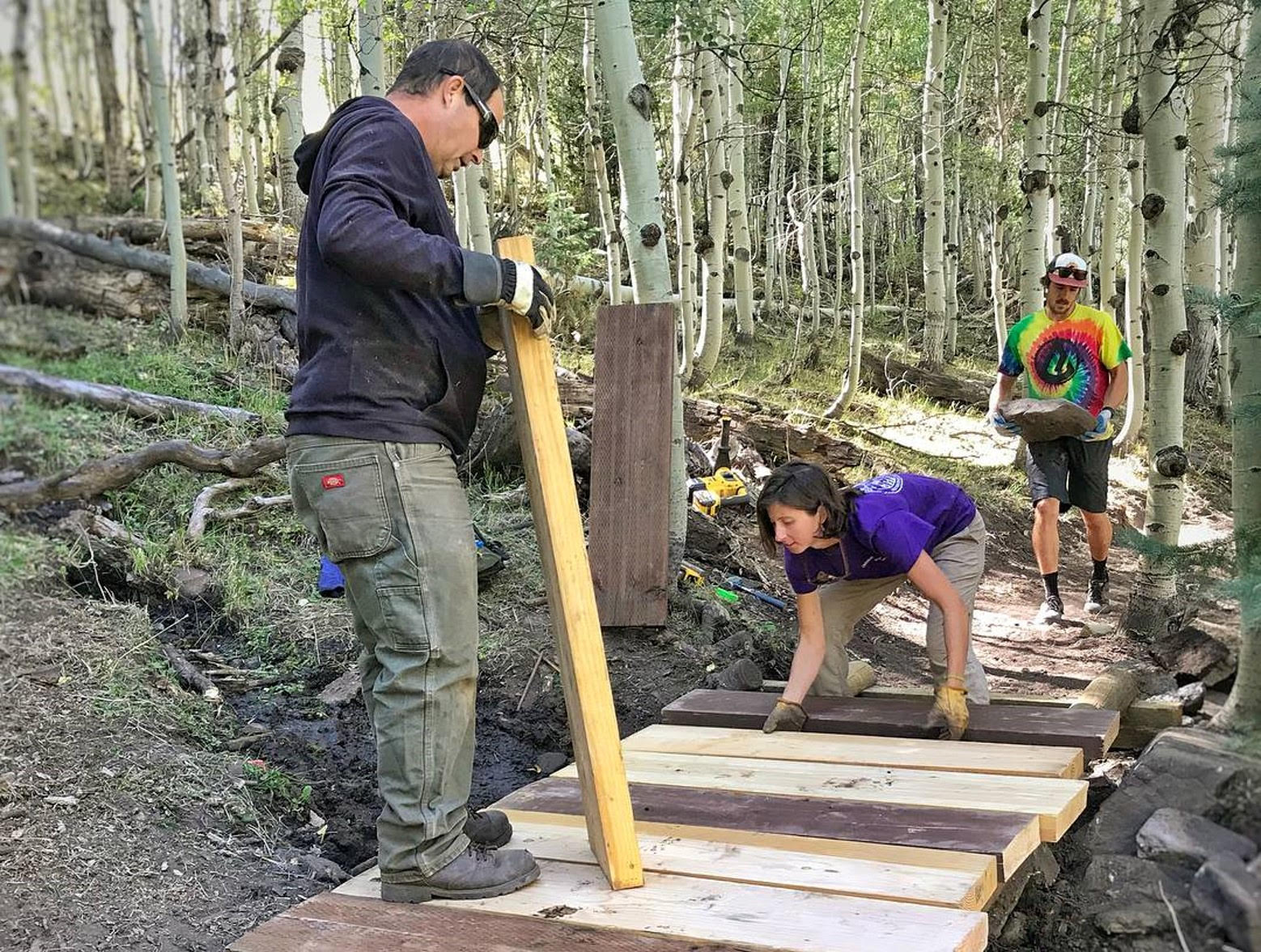Trail Mix employees will soon be reporting to Grand County’s community and economic development department for official duty.
The Grand County Council voted 5-0 on Tuesday, Sept. 18, to incorporate Grand County Trail Mix’s employees into the department, effective Jan. 1, 2019; Curtis Wells was not present for the vote.
In doing so, council members committed the county to serving as the fiscal steward of the group that builds and maintains a growing network of nonmotorized trails in the greater Moab area with the help of its employees and volunteers.
Grand County Community and Economic Development Director Zacharia Levine said he believes the group’s work on area trails is one of most important economic drivers in the community. The network itself, he said, is among the most defining quality-of-life elements for thousands of people who live in the community, as well as many visitors.
“We are very aware of contributions that Trail Mix has made to our community,” Levine said.
Grand County Budget Officer Chris Baird also touted the economic importance of the Trail Mix network, which includes the Mag 7, Amasa Back, Moab Brands, Pipe Dream and KlonZo routes, among others.
“I think we have to recognize that there would be no mountain biking industry with no trails,” he said.
Grand County is the signatory on all of the trail rights-of-way that have been procured from the U.S. Bureau of Land Management (BLM), and Baird said it has an obligation to keep them in good shape.
“We’ve agreed to maintain them,” Baird said. “It is on us to do it.”
Under a 2009 agreement with the county, the nonprofit Canyonlands Natural History Association (CNHA) has served as Trail Mix’s fiscal agent. In that role, it has received grants and donations to Trail Mix, while providing payroll and accounting services for several part-time employees.
However, as of January 2019, the association says it can no longer provide those services, mainly because Trail Mix employees were approaching full-time hours due to workload needs. That “inadvertently placed” the CNHA in a position where it was required to provide those employees health insurance under the federal Affordable Care Act — or “Obamacare” — according to a memo from Levine and Grand County Council Administrator Ruth Dillon.
COUNCIL MUST STILL FUND POSITIONS DURING BUDGET PROCESS
County officials will seek formal approval of the Trail Mix job descriptions at a future county council meeting. Levine said they realize none of the positions will be fully authorized until the council approves the county’s 2019 budget.
Looking into the longer-term future, the memo from Levine and Dillon anticipates that Grand County is likely, over time, to provide increasing levels of park, trail and recreation services.
“Moving in this direction will ensure the County is prepared for such expansion at a future date when it becomes appropriate and financially feasible to do so,” the memo says.
Council member Jaylyn Hawks said she fully supports Trail Mix, and she praised the group’s proactive efforts to secure grant funding for trail projects.
“I feel like they operate a very lean organization,” she said.
By official Trail Mix estimates, it costs the group $2,000 to build each mile of mountain bike trails. In comparison, trail builders in nearby Fruita, Colorado, spend $28,000 per mile, while their counterparts in Duluth, Minnesota, spend $40,000 per mile.
Levine said the group has gotten along thanks to an incredible amount of volunteer hours, scraping by with relatively little help from the county. But it’s at a stage now where county officials “really need” to think about the maturation of Trail Mix, he said.
“Yes, it will cost more money, but think (about) the impacts or risks of not investing,” he said. “From the county’s perspective … (it) far outweighs the costs that would be incurred.”
Baird agreed that the county will incur additional expenses by taking on the Trail Mix positions. But he noted that eligible funding sources to help defray those costs include a local option sales tax for transportation; a restaurant tax; Transient Room Taxes on overnight accommodations; and grant revenues.
“We’ll have to figure out what our options are in terms of where we can find the money,” Baird said.
Other funding sources include trail map sales and private donations. According to Baird, individuals who give money to Trail Mix will still be able to write off their donations come Jan. 1, because the county is “virtually identical” to a 501(c)(3) nonprofit.
Going forward, Levine said that county officials will be asking the City of Moab for a to-be-determined contribution.
“I’m hopeful that the city acknowledges the value of trail network and the importance of keeping it very well maintained,” Levine said.
Council member Greg Halliday said he has a hard time justifying the expenditure of property tax revenues to pay for tourists’ vacations, leading Baird to reiterate that funding for Trail Mix work comes from diverse sources.
“To the greatest extent possible, we don’t (use property tax revenues),” Baird said.
Although council member Rory Paxman ultimately voted in favor of the council’s action, he said he’d like to know whether the city will commit any funds to help out.
Baird said the budget that the county council passes in December will dictate future funding obligations.
“I would say regardless of whether city decides to contribute, it’s still our responsibility to maintain those trails,” he said.
CNHA opts out as group’s fiscal agent due to ‘Obamacare’ mandate
“Yes, it will cost more money, but think (about) the impacts or risks of not investing.”




